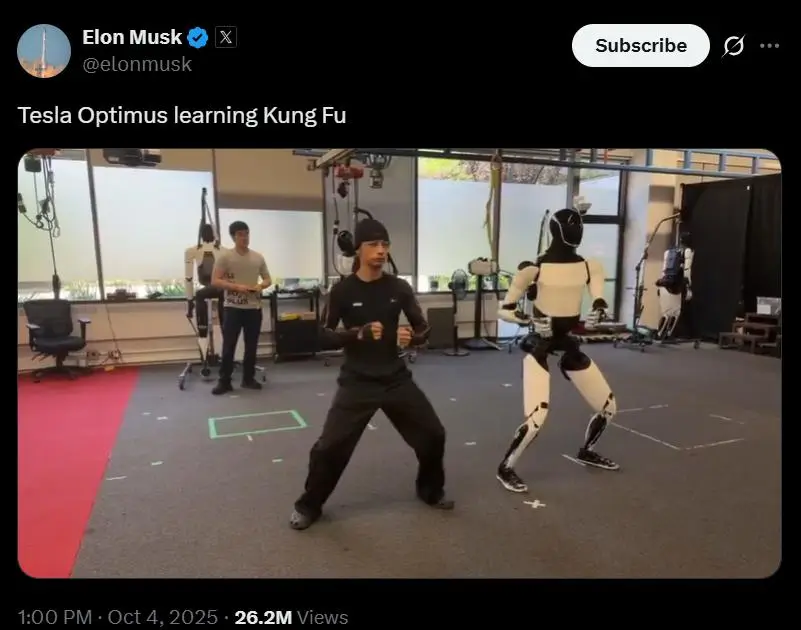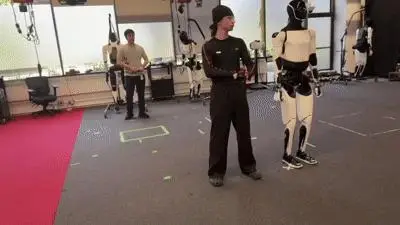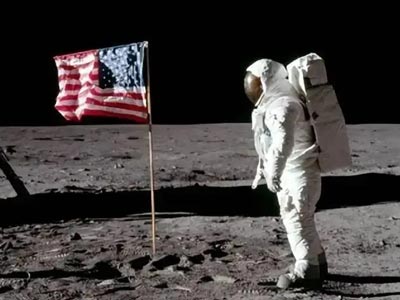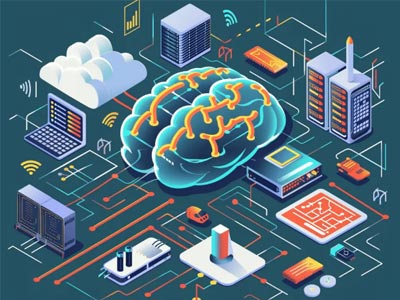Musk's "full-time" first battle is a success: the robot Optimus practices Chinese Kung Fu, and the countdown to mass production has begun.
When Musk posted a video of the Optimus robot imitating a human practicing Kung Fu on social media platform X, the comment section was instantly abuzz. In the video, the nearly 1.8-meter-tall metal body replicated martial arts moves with astonishing fluidity, its only restraint being a leash on its back. This was no longer a lab-based robotic dance performance, but a true revolution in human-robot interaction.

Musk personally addressed the criticism: "It's AI, not remote control." The weight of these six words was enough to shock the entire tech world. Just three months ago, the "Iron Man of Silicon Valley" announced his end of semi-retirement, returning to Tesla's core business as a full-time employee. It now appears this decision is producing remarkable results.
Optimus's impressive performance is no accident. Careful observers will note that Tesla officials suddenly announced on September 30th: the third-generation Optimus will be released by the end of 2025, with mass production commencing in 2026, and an annual production target of one million units by 2030. This timeline perfectly aligns with Musk's September 16th declaration of "full commitment to robotics production," like a meticulously orchestrated technological symphony.

The capital market was the first to sense the signs. Analysts at Huaxin Securities revised their research report overnight, noting that "Musk's return to focus has directly reversed the sluggish R&D performance in the first half of the year." Orient Securities even boldly predicted that Tesla is elevating humanoid robots to a strategic level on par with electric vehicles. While other automakers are still scrambling over autonomous driving, Tesla has quietly opened up a second front.
In the basement lab at Tesla headquarters, engineers are putting the finishing touches on version 3. According to insiders, the new generation Optimus will feature "human-like dexterity," a detail that has professional investors' hearts racing. Kaiyuan Securities estimates suggest the joint module market alone could generate valuations exceeding 200 times the PE ratio. A report from CICC describes the industry's transformation in technical terms: "Technological exploration has moved from conceptual discussion to mass production screening."
This revolution is far more profound than meets the eye. When magnesium alloy processing equipment meets PEEK material, and when automotive-grade sensors are integrated into bionic joints, traditional manufacturing is quietly undergoing a restructuring. Just as no one could foresee the disruption brought about by smartphones twenty years ago, few today realize that the Optimus represents a new, $500 billion market cap—a figure derived from Tesla's own market capitalization target.
Musk's ambitions have never been limited to commercial success. The "one million units in ten years" goal he set in his incentive proposal is essentially rewriting the way humans and machines interact. When robots can imitate kung fu moves like apprentices, the boundaries of factory assembly lines, domestic services, and hazardous operations will be redefined. This may explain why the capital market is willing to give a 20x PS premium to a robotics business that hasn't yet reached mass production—they're not buying into the present, but the power to influence the next decade.
Looking back in the autumn of 2025, Optimus's kung fu debut may go down in history. Just as the Model S's debut in 2012 redefined the automotive industry, this 30-second video of human-robot sparring may be the beginning of the commercialization of humanoid robots. When Silicon Valley geniuses begin to study the principles of Wing Chun's power generation, the world should understand: this time is truly different.




